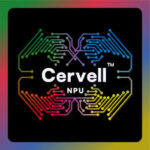In the fast-paced world of AI development, bridging the gap from trained models to production-ready applications can feel like an eternity. Enter Semidynamics’ newly launched Inferencing Tools, a game-changing software suite designed to slash deployment times on the company’s Cervell RISC-V Neural Processing… Read More
Semiconductor Intellectual Property
WEBINAR: How PCIe Multistream Architecture is Enabling AI Connectivity
In the race to power ever-larger AI models, raw compute is only half the battle. The real challenge lies in moving massive datasets between processors, accelerators, and memory at speeds that keep up with trillion-parameter workloads. Synopsys tackles this head-on with its webinar, How PCIe Multistream Architecture is Enabling… Read More
Memory Matters: The State of Embedded NVM (eNVM) 2025
Make a difference and take this short survey. It asks about your experience with embedded non-volatile memory technologies. The survey is anonymous, and the results will be shared in aggregate to help the industry better understand trends: 2025 Embedded Non-Volatile Memory Survey.
We are now in the AI era where data is the lifeblood… Read More
5 Lessons the Semiconductor Industry Can Learn from Gaming
By Kamal Khan
The semiconductor world has always been the beating heart of tech innovation, powering everything from our smartphones to the latest AI breakthroughs. However, as chip complexity increases and market demands accelerate, adherence to traditional development cycles may be stagnating design teams and slowing … Read More
Quadric: Revolutionizing Edge AI
In the rapidly evolving landscape of AI, Quadric stands out as a pioneering force in edge computing. Founded in 2018 and headquartered in Burlingame, California, Quadric is a technology company focused on developing high-performance, energy-efficient processors for AI workloads at the edge devices like smartphones, IoT … Read More
CAST Simplifies RISC-V Embedded Processor IP Adoption with New Catalyst Program
In a move poised to accelerate the integration of open-source processor architectures into resource-constrained devices, semiconductor IP provider CAST, Inc. unveiled its Catalyst™ Program at the RISC-V Summit in Santa Clara, California. This initiative addresses a persistent pain point for embedded system developers:… Read More
Chiplets: Powering the Next Generation of AI Systems
AI’s rapid expansion is reshaping semiconductor design. The compute and I/O needs of modern AI workloads have outgrown what traditional SoC scaling can deliver. As monolithic dies approach reticle limits, yields drop and costs rise, while analog and I/O circuits gain little from moving to advanced process nodes. To sustain … Read More
Podcast EP312: Approaches to Advance the Use of Non-Volatile Embedded Memory with Dave Eggleston
Daniel is joined by Dave Eggleston is senior business development manager at Microchip with a focus on licensing SST SuperFlash technology. Dave’s extensive background in Flash, MRAM, RRAM, and storage is built on 30+ years of industry experience. This includes serving as VP of Embedded Memory at GLOBALFOUNDRIES, CEO… Read More
Podcast EP311: An Overview of how Keysom Optimizes Embedded Applications with Dr. Luca TESTA
Daniel is joined by Luca TESTA, the COO and co-founder of Keysom. After studying microelectronics in Italy, Luca obtained his PhD in France while working with STMicroelectronics on analog/RF circuit design.
Dan explores the charter and focus of Keysom with Luca. Luca describes how Keysom is providing an automated and reliable… Read More
Webinar – IP Design Considerations for Real-Time Edge AI Systems
It is well-known that semiconductor growth is driven by AI. That simple statement breaks down into many complex use cases, each with its own requirements and challenges. A webinar will be presented by Synopsys on October 23 that focuses on the specific requirements for one of the most popular use cases – AI at the edge. The speaker… Read More










Quantum Computing Technologies and Challenges